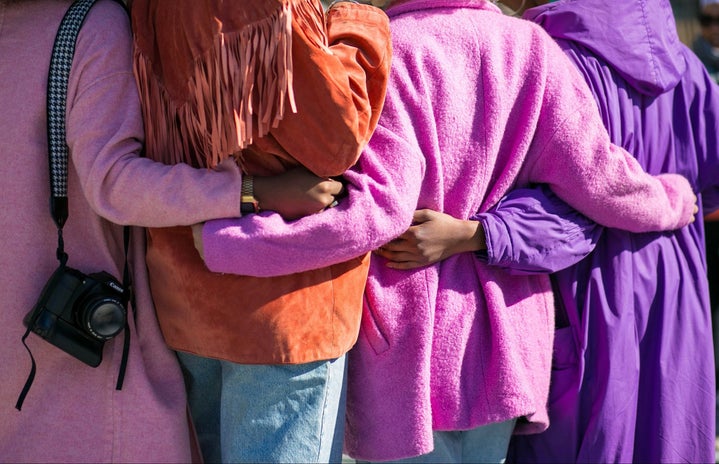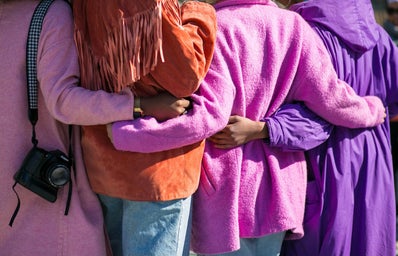If you’ve ever taken an Intro to Psychology class, taken a Buzzfeed quiz, or even simply scrolled through Twitter, you’ve probably seen mention of the love languages somewhere. Longtime marriage counselor Dr. Gary Chapman wrote a book on these concepts in the 90s, outlining the five ways partners express and experience love: physical touch, quality time, words of affirmation, gift-giving and acts of service. Despite their romantic implications, these concepts have resonated with people in all their relationships, whether romantic or platonic, and they do a good job of simplifying people’s manifestations of care.
Personally, my top love language is physical touch. Though it’s almost tied with quality time, what truly makes me feel most appreciated is being smothered in hugs and cuddles while you’re spending said time with me. I was definitely known as a hugger in middle school, but high school me saw a decline in the amount of affection I felt comfortable giving my friends. Everything started to have very serious implications — hormones were developing, attractions were growing, and if I wanted to hold my best friends’ hands well… I couldn’t.
Adding to my cautious behavior was the fact that everyone in my friend group was queer, and — as any gay knows — figuring out social cues while exploring sexuality is nothing short of a panicky disaster. I didn’t know what was appropriate anymore because I didn’t want to give any false signals. Navigating ways to show my friends love was somewhat an obstacle. I had to learn to delve into other forms of affection like servicing or gifting. My friends and I started giving each other little letters and cooking treats for one another. It was lovely, but a little part of me knew I still wished to kiss their cheeks as a thank you.
At the time I also had a boyfriend, so I was always convincing myself that if I wanted affection that bad I could get it, and I had somewhere to go when I wanted to express it. It didn’t make sense to me that I felt so dissatisfied when going to him because, even though it wasn’t forced, it felt like it was just happening because that’s what people in relationships do. And just as a kiss or a hug is part of a relationship, so is sex, so it wasn’t long before I realized my boyfriend didn’t really like to be that close, it was just an excuse to get the ball rolling. The thing is, that’s still touch, right? So, even though I didn’t feel particularly fulfilled, it wasn’t until college that I revisited the topic of my love language.
One day, while lying in bed with a new connection this past year, my then-companion brought up the topic of love languages. “What’s yours?” he asked, and I found myself at a loss. “I’m not really sure. I don’t think I’ve gotten to experience them all.” “Well, with how you are, I’d say touch. I would know, that’s mine.” He then turned around and went right to sleep, completely unaware of what he’d just awakened in me. Here I was with someone I had no intention of pursuing a relationship with — something we both knew — and yet the one way I most showed him I still highly valued our connection was through putting my leg over him while we slept. It’s an undeniable comfort for me, to feel the presence actively with me.
Now, a few months later, I understand myself much better. It doesn’t have to be sexual, or even romantic, but physicality is important because it’s an exchange of energy. To me, giving a hug or draping my leg is a sign of comfort and connection, much more than a display of flirtation. It’s a reminder of company. It’s the acknowledgment of support, and an effective method of grounding. I grew up going around the room giving a kiss on the cheek to all the guests we ever encountered as simple acknowledgment. It’s no surprise to me that this trickles down to most aspects of my life. I like to be seen, felt and understood. And honestly? I wouldn’t have it any other way.


